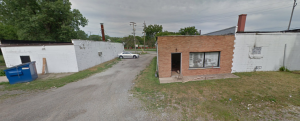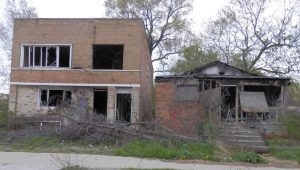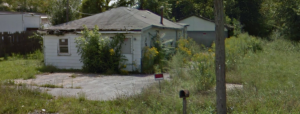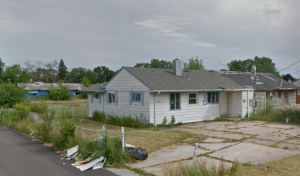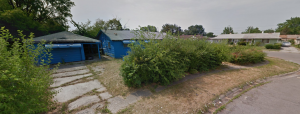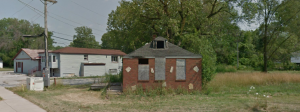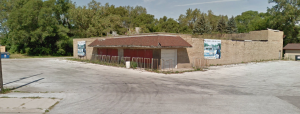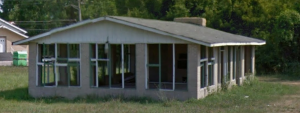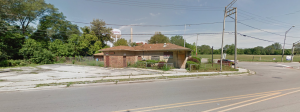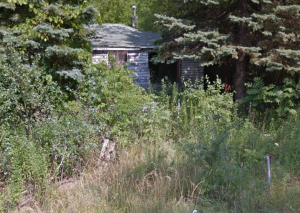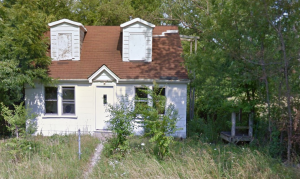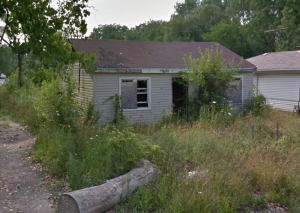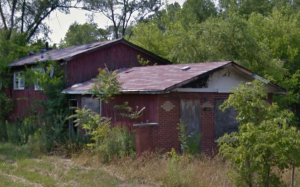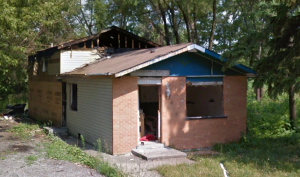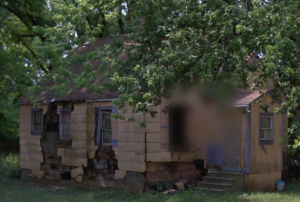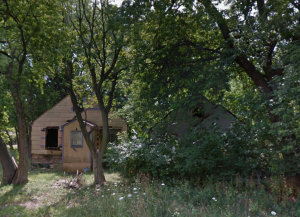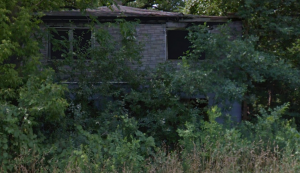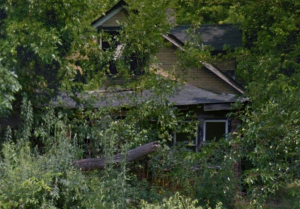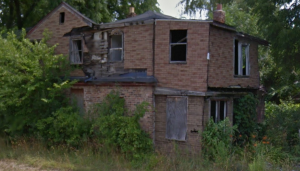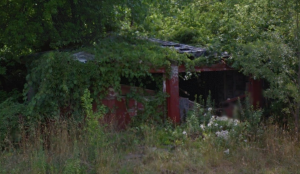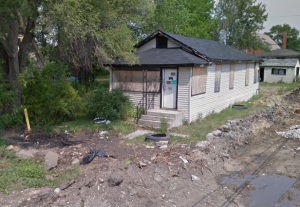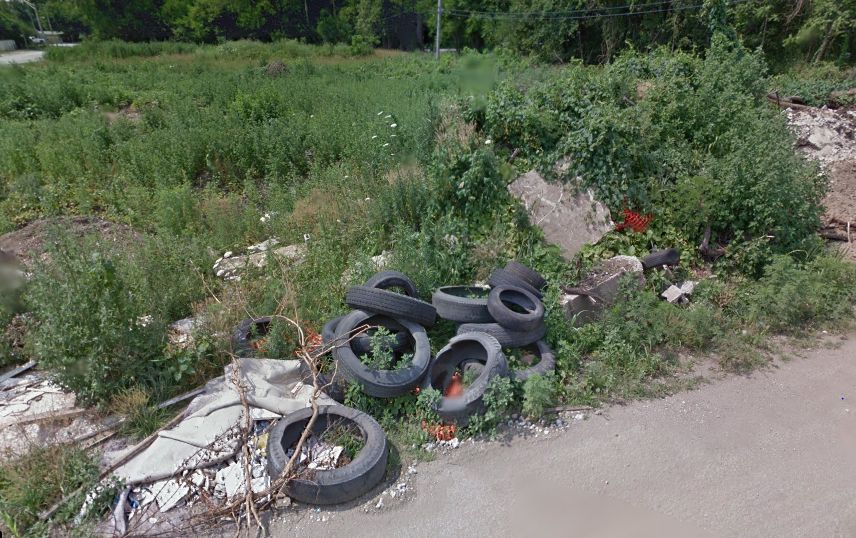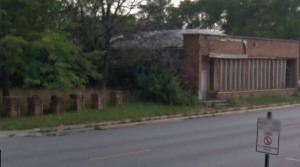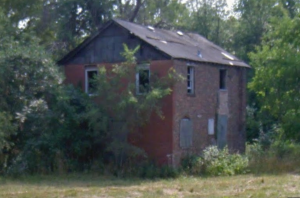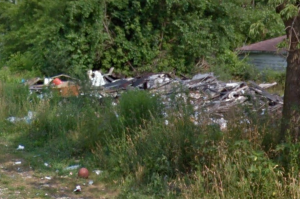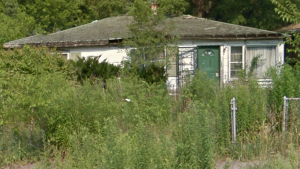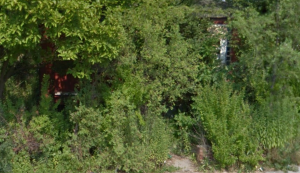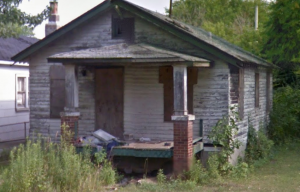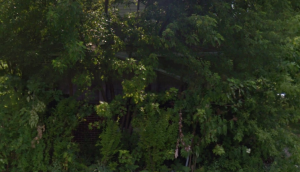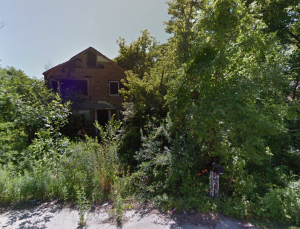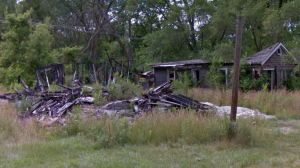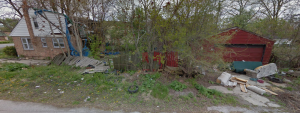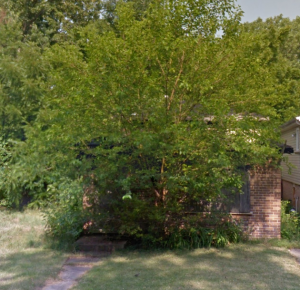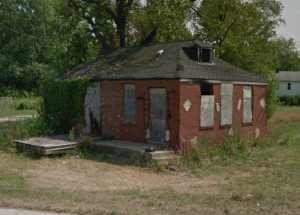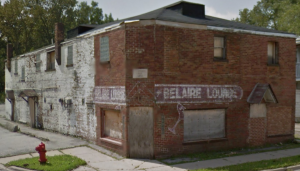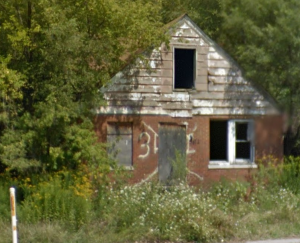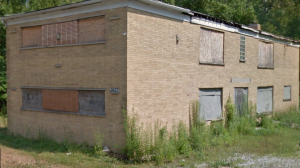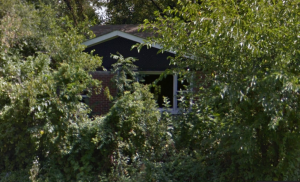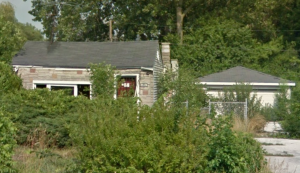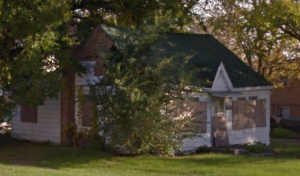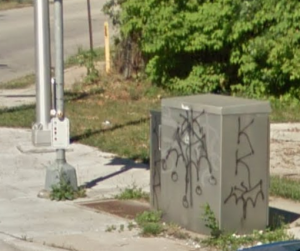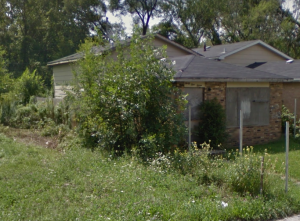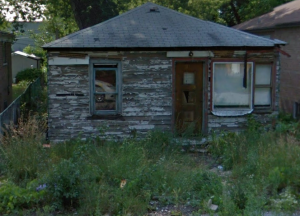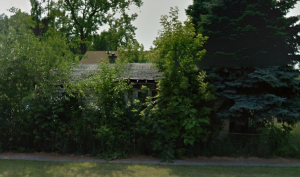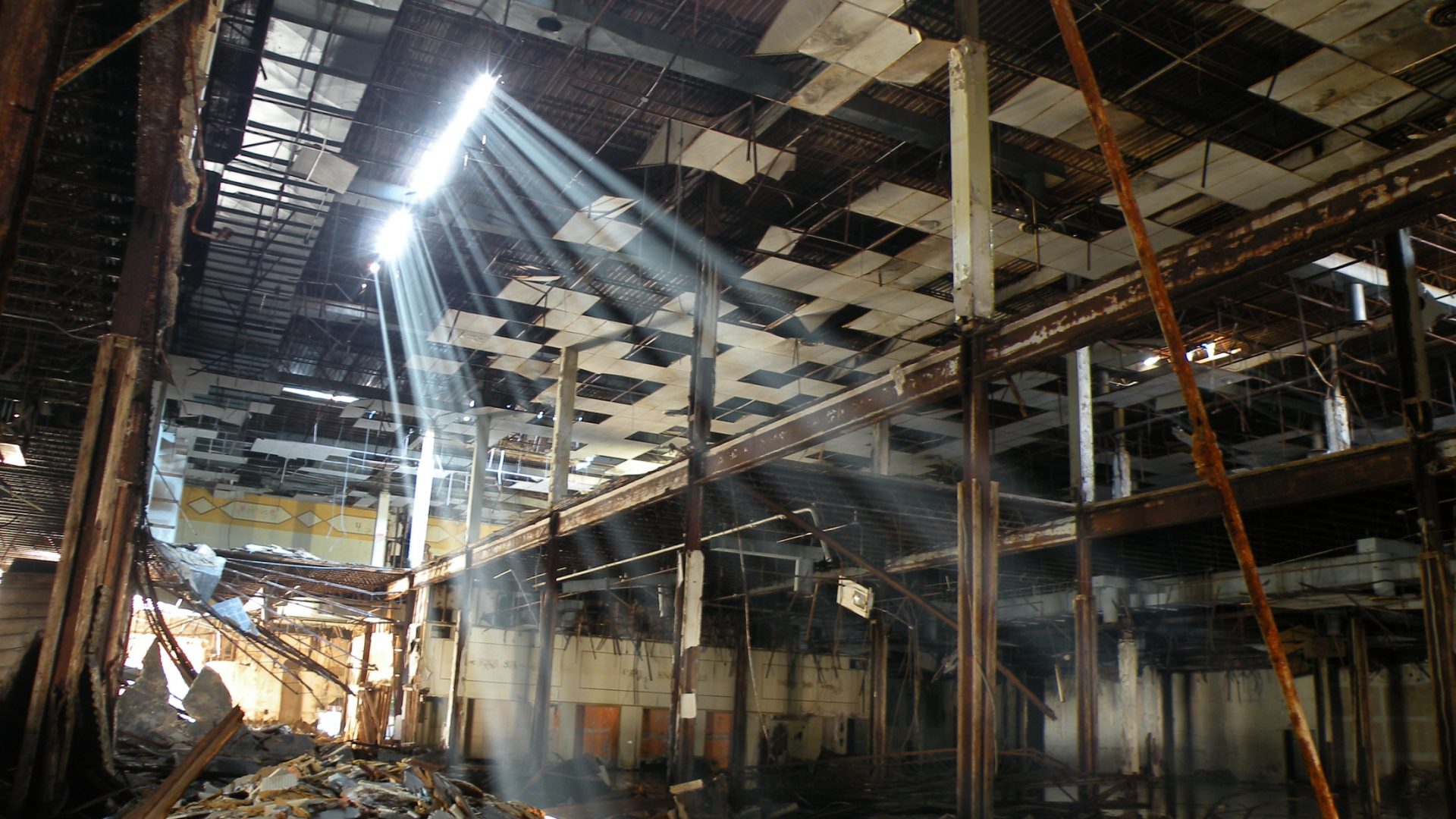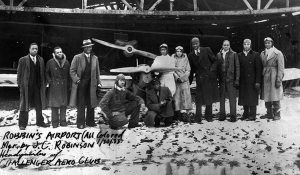| Settled by | Henry E. Robbins; | |
|---|---|---|
| Year infiltrated | 1964 | |
| Crime impact | Whole | |
| Worst areas | Everywhere |
|
| Suburban projects | Richard Flowers Homes |

I will start off by saying that Robbins is one hard up community and is perhaps the hardest up of any Chicago land suburb, and has been for a long time. Government corruption, police corruption, street gang violence, drugs, vacant and deteriorating properties, high crime and high poverty has plagued this community for many years. If you check on the internet about the crime rates for Robbins you will see that the numbers are low and it seems like a safe area, but it is a fact that police and government officials have covered up or pushed aside many of the crimes in this community for years, which has caused severe under reporting of crime. Robbins has been rocked with scandals over the years as much as being rocked with crime. Scandals of over 200 rape kits stacked in piles dating back nearly 30 years have sat in police evidence rooms that were never sent to state labs for processing, the hiring of a fake Police Chief (pictured) in 2013 that turned out to have lied on his resume and was wearing a fake LAPD badge, a police staff of one full time officer, one Police Chief and only a handful of part time officers that used a “points” system for determining if an arrest was to be made were all scandalous topics author Bryan Smith talked about in his 2014 article The Trouble With Robbins (Politics and City Life, Bryan Smith December 1, 2014). Officers would not arrest any juvenile offenders after they committed their first few crimes, the point system was in place so that once the points were reached then they would finally be arrested for the first time, even though it was not really their first offense.
Robbins was a barren area in the 19th century and does not have a very rich early history like most Chicago area suburbs until later years. In the year 1892 several land speculators bought subdivided land in the area hoping to build a town that was close to the Columbian Exposition that was to come to Chicago in 1893, but once 1893 happened, the land proved to be useless and a total loss for investors; therefore, not very many homes were built. There were just a few settlers that were mainly African American, the first being Samuel Gaither in 1892, a few other families soon followed in the 1890s.
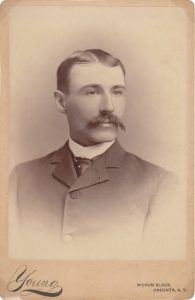
In the year 1910, Henry E Robbins (pictured) went on a mission to help poor black southerners settle this land for plots of land as cheap as $90 that families could make payments on. Robbins developed four subdivisions of houses for black southerners, while his sons developed nine more subdivisions between the two of them up until 1917.
In 1917 there were over 300 residents in the community and the need to incorporate came up as a topic, on December 11, 1917 the proposition passed and Robbins officially was incorporated and named after Henry Robbins whose philanthropy helped develop this all black suburb, that was now the first suburb governed by blacks in the Chicago area. Many outsiders looked at Robbins as a slum because of the primitively constructed houses that were made on a budget by the black southerners and former Chicagoans that moved here. Many residents lived without plumbing and electricity in the early years but these simple ways of living were favorable to early settlers as it reminded them of back in the south and in many ways early Robbins was laid out to reflect a small southern rural town. The lack of utilities and other amenities kept costs for the village low which was great for the local tax base. The men worked at nearby manufacturing companies in adjacent communities while the women brought in income by farming and performing domestic services.
Robbins continued to grow in the 1920s and 1930s until there were 1,300 residents by the 1940 census. Black owned small businesses opened in the community, and the most prominent black owned business was the Robbins Airport in 1931 by Bessie Coleman, Cornelius Coffey, and Johnny Robinson, which was the first black owned and operated airport in the United States. This airport was famous for training ten of the famous Tuskegee Airmen which was a well-known all black squadrons that bravely fought in the skies in World War II. The airport drew large crowds in the summer months which helped local taverns.
Robbins experienced rapid population growth in the 1940s and 1950s as new subdivisions were platted and more utilities such as electricity and running water became more standard. The peak of Robbins population was over 9,600 people by 1970.
Robbins was appealing to many lower income black Chicagoans and southerners that were looking to own their own home at an affordable rate without having to deal with racist neighbors that do not want black neighbors. The issue with poverty was a growing problem along with substandard houses, which many of them were practically shacks. Many of these residents did not even have plumbing and even electricity because they could not afford it, these were issues brought up that led to the proposal for a public housing project that would bring about slum clearance of many of the substandard houses in Robbins.
In 1954, the Richard Flowers public housing project was built over the former site of substandard slums and many of those residents moved into the projects that provided electricity and plumbing which was something the families previously had to do without. Before the projects were built in 1954 about 22% of houses in Robbins were considered substandard in 1950, and even though many of those houses were torn down to make way for the projects, the number of substandard homes grew by 1960 to over 40% which showed just how impoverished Robbins was, this would lead to an increase in crime and the arrival of Chicago based street gangs.
In the year 1964, the Black P Stones went on a conquest to take over some of the south suburbs near Chicago and one of their first landing points was Robbins in 1964. It all started with the “Harvey Dixmoor Rangers” that was the first suburban Black P Stone branch in history that settled in the villages of Dixmoor and Harvey. After this the Rangers spread into other south suburban communities and were brought to Robbins to same year by William Harper who was an original Harper’s Boy that became a Ranger in 1960.
I don’t know exactly when Black Disciples arrived but it was sometime in the 1960s, Vice Lords also arrived in the 1960s.

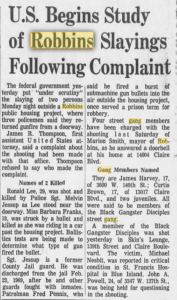
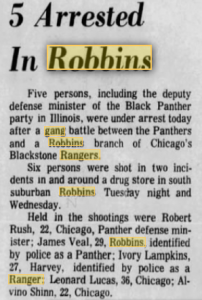


By 1970, the gang violence was escalating between Black P Stone factions as street gangs went on a rampage on Halloween night in 1970 shooting at five houses, one of the houses that were hit was the home of Mayor Marion Smith as he was struck in the leg by Black Disciples. There was some speculation that it was payback for village crackdowns on gangs but also a possible accident (Chicago Tribune Page 12, November 2, 1969). The shootings and gang violence continued over the course of the next few days and shootings and gang violence were happening in the Richard Flowers projects. On the night of November 2nd Officers Melvin Jessup and Eugene Grant were arrested for killing two youths in the projects because they mistook them for gang members that were causing the trouble. The jury ended up not convicting the Officers involved but they were suspended (Chicago Tribune page 2, November 25, 1970). This was just the beginning of Robbins police being looked into for corruption and brutality. I had found another court case from a 1971 incident that involved Officer Marvin Jessup coming to the scene of a shooting between the Black P Stones and Vice Lords at Eisenhower School at 137th and Crawford in which one youth was shot and killed while another had a chain thrown in his face. This court case proves that Vice Lords had settled in Robbins by 1971 and it also proves that Officer Jessup was given his badge back despite being accused of the earlier charges (People vs. Terrell, 1974).
After the shooting of the two people in the Richard Flowers projects in 1970, Robbins police were being heavily scrutinized. The Chief of Police Porter Mckamey in 1970 came under heavy fire for police brutality against Gaile Biggers who agreed to come forward along with Ronald Lee who was of the shooting victims by Officers Jessup and Grant on November 2, 1970. Apparently in the summer of 1969 Biggers asked Mckamey for some money and Mckamey became enraged somehow and beat the woman severely then arrested her. She was brought to the police station and not told what her charges were against her and was instead strapped to a stretcher and taken to the hospital (Chicago Tribune page 8, November 13, 1970). Police Chief Mckamey was never charged with beating the woman but he was brought up on charges of theft in May of 1970 which took effect later that year and was fired from the police force (Chicago Tribune Luci Horton, March 21, 1971). The thing that really shook people up and not trust the Robbins police department the most was the fact that Mckamey’s witness Ronald Lee was suspiciously one of the two that was slain in the projects right before testifying against the chief and to make it worse the Officers that did the shooting got to keep their badges. Mayor Marion Smith vowed to clean up the Robbins police force and the crime in the village; however, the cleanup efforts did not work and the Robbins police force continued to be corrupt in the 1970s while street gangs and crime grew more powerful, drugs also began to flow through the community.
In the 1970s, street gangs found Robbins to be the best place outside of the city to conduct illegal activities because the community was on the verge of almost lawlessness and allegations were flying around that the police themselves were committing crimes and letting criminals go while brutalizing others.

In the year 1977 Robbins police Officer Samuel Coleman was assigned to act as in Internal Affairs officer and investigate the 15 man police department to determine what exactly was going on. What Coleman uncovered was shocking as it was discovered four police officers did not even have drivers licenses, officers were committing car theft, burglary and even armed robbery. Evidence was not inventoried, bond money was missing, confiscated drugs were missing and there were many complaints of police brutality against citizens and fist fights among officers and officers and citizens. There were also police files that were disorganized if the files were even made and a severe lack of response to emergency calls. The village then voted in March of 1978 to fire all 15 police officers which included the Chief of Police Percy Coleman (pictured). The Village of Robbins was then patrolled and policed by the Cook County Sheriff with Gordon Frierson heading the county sheriffs that were to patrol the suburb, Frierson was chosen because of his track record of busting many gang members and criminals in Robbins after Robbins police failed to do so (Chicago Tribune page 3, March 7, 1978). Among the officers terminated was Samuel Coleman who was the Officer that did the investigating which was surprising, Coleman then kept on investigating the corruption on his own, and now that Frierson was hired directly onto the Robbins police force as the new Chief of Police, Coleman found out that Frierson was using his power to shake down local businesses, Coleman than brought that before the village but Coleman was arrested by Frierson for impersonating a police officer. Former Officer Coleman then ended up filing a lawsuit against the village in 1982 for $350,000 for terminating his employment based upon leading the investigation into corruption. Ironically Frierson and Mayor Marion Smith teamed up to sue the village as well in 1984, the village then turned around to sue to public official’s attorney Aldus Mitchell for $2 million dollars because he allegedly did not show up in court and did not come to the aid of the village back when he was the village’s attorney in the 1970s (Chicago Tribune Maurice Possley and Andrew Fegelman, January 27, 1987).
While all the law suits were going back and forth and the police corruption was being investigated in the late 1970s and early 1980s, the community became more financially devastated by the closing of several factories near the suburb. Robbins already had a very high unemployment rate and poverty as is, but after this economic devastation the community only became more financially strapped and more home owners lost their homes and businesses closed down. Many foreclosures on homes caused rows of boarded up and run down houses to appear on every block in the community as gangs became stronger. A new police force was put into Robbins that was supposed to be better than the 1970s officers that were all fired but somehow, criminals were still getting away with crimes, brutality allegations were still surfacing and crimes were not getting investigated. The community was financially strapped and on the verge of total bankruptcy so paying the officers a decent wage and letting them work full time became impossible so problems and crime only worsened.
In 1986 a new Police Chief was appointed Chief Charles Clark who was now in charge of 10 full time police officers and 15 part time officers. Crack cocaine hit the U.S. hard and especially took its toll on urban and suburban ghettos across the U.S, so Charles Clark told the Chicago Tribune in 1988 that he set a curfew in 1987 to keep gangs off the streets and offered free movie night at the court house for youths as an alternative to gang activity, he also stated that crime was cut in half in 1987. Clark also stated he set up a special narcotics team to deal with the overflow of drugs in the community and the new crack epidemic (Chicago Tribune Rob Karwath, July 10, 1988). Even though Clark boasted to the Tribune about his accomplishments in 1988, crack still spilled heavily onto the streets to the point where the community was known as “Rockville” because of the seemingly endless supply of crack cocaine that could be found in the village. Dealers sold crack cocaine openly on street corners, alley ways, parking lots and in the Richard Flowers projects and in the Haven Trailer Park where police conducted a major raid in August of 1989 in the two locations (Chicago tribune Page 1, August 27, 1989).
Law enforcement of course was operating on a very strict budget thanks to the law suits filed against the village in the 1980s which made fighting against the crack epidemic almost impossible and brought about more police corruption that caused the lawsuits to begin with, making a vicious cycle. The village was so drained from paying out the law suits they had to lay off the 100 city workers in order to pay the debts and public officials including police officers who were working for no wages, the reason layoffs were necessary was because the village did not have insurance and could not afford it to begin with to deal with lawsuits such as this (Chicago Tribune page 1, February 2, 1987). In February 1987, the lack of wages was too much for many city workers especially firefighters that had the whole fire department walk out the door (Chicago Tribune Page 5, February 7, 1987).
Eventually city wages were restored but the village woes did not end especially since crack cocaine continued to be a major problem in the suburb as dealers blatantly stood around selling drugs and gangs ran the community. The community now had Black Gangster Disciples, Black P Stones, Vice Lord factions, Mickey Cobras, New Breeds, Black Disciples and Four Corner Hustlers and there were even black members of the Satan Disciples street gang operating in the suburb.
Citizens in the community were fed up since the police could not do much about it or possibly were involved in the drug trade, so residents took to the streets and marched in protest about drug dealers in September of 1989. It was the best the community could do because the Robbins police department was severely underfunded with out of date resources and old police cars, and officers were paid only $13,500 to $14,000 per year in salary in 1989 and most officers could only get part time work even though full time was needed. The Northeastern Metropolitan Enforcement Group (MEG) was expected to assist Robbins with their drug problems; however, they only offered one burst of assistance in the summer of 1989 (I covered that story above about the drug bust in the projects and the trailer park), but because Robbins was a poorer suburb that could not pay into MEG; therefore, Robbins was overlooked (Chicago Tribune Ronald Koziol and Jerry Shnay, October 1, 1989).
By 1992, there was major focus on vacant houses in the community as Robbins has always been known to be ripe with them. Some condemned homes were demolished in 1992 due to sales of crack cocaine and crack dens being operated by gangs in the community. This issue was brought about after gang and drug violence became a larger threat than ever in the 1990s as the suburb plunged further into disarray.
The focus on police corruption in the 1970s and 1980s did not stop Robbins police from committing crimes and acting like the very gangsters they were sworn to deter in the community.
Part time police Officer Bernard Ferguson purchased cocaine from drug dealer Michael Myles then realized a little later that the cocaine was fake. Ferguson then tracked Myles back down and held him up at gun point proceeding to rob Myles but when Myles tried to get away Ferguson shot him dead. The drug deal was over only $9.80 that Ferguson had given to Myles (Chicago Tribune Terry Wilson, September 9, 1992).
In the year 2000 two Robbins police detectives were brought up on charges of extorting cash from neighborhood crack cocaine dealers in 1995 and 1996, the allegations also showed that these officers tipped off a long time drug dealer of raids and helped him distribute heavy volumes of crack cocaine (Chicago Tribune Matt O’Connor, July 12 2000).
In the year 2003 the FBI went undercover as a drug dealer in Robbins and when Officer Jacques R. Polk tried to shake him down he was arrested immediately and brought up on charges after he took $10,000 from the undercover agent. The investigation was started after heavy suspicions of Polk shaking drug dealers down (Chicago Tribune Rudolph Bush, June 22, 2005).
That same year in 2003, Marcus Mcfadden, another Robbins police officer was nabbed in a corrupt cop drug theft ring after he took $20,000 and phony cocaine in a FBI undercover sting (Chicago Tribune, October 23, 2003).

In 2012 Police Chief Johnny Holmes (pictured) was charged with a second DUI in the suburb of Posen as he blew twice the legal limit, shortly after the arrest Holmes stepped down as the chief (Chicago tribune, December 27, 2012).
These are all examples of Robbins police corruption over the years and the reason why crime has always run rampant in the suburb. Unstable police Chiefs, untrained and undisciplined part time officers and full time officers that shake down drug dealers have all plagued this community for years and there are no signs of these issues stopping.
I did not sugar coat this piece about Robbins because the reality is that this is one of the most dangerous suburbs in Chicago land and has rampant issues with poverty, vacant lots, abandoned structures and a severely underfunded and often corrupt police force. The problems in the village are not new; however, despite a call to action and even media attention history continues to repeat itself in this small suburb.
This suburb is severely blighted and has the most land standing abandoned houses in all of Chicago land, many of these shuttered homes have been neglected for so long that they are completely buried in overgrown trees, weeds, bushes and vines, especially since many of them have no houses next door to them due to being razed many years ago. If Robbins did not have so much vacant land this suburb would perhaps be the Chicago area suburb with the highest amount of shuttered homes and businesses.
In recent years most of the Richard Flowers projects have been demolished while the rest have been rehabbed. The half of the projects near 135th and Woodlawn were torn down while the area closer to 139th and Grace was rehabbed.
All images below are photos of vacant properties. Almost all photos below are courtesy of Google Maps.

